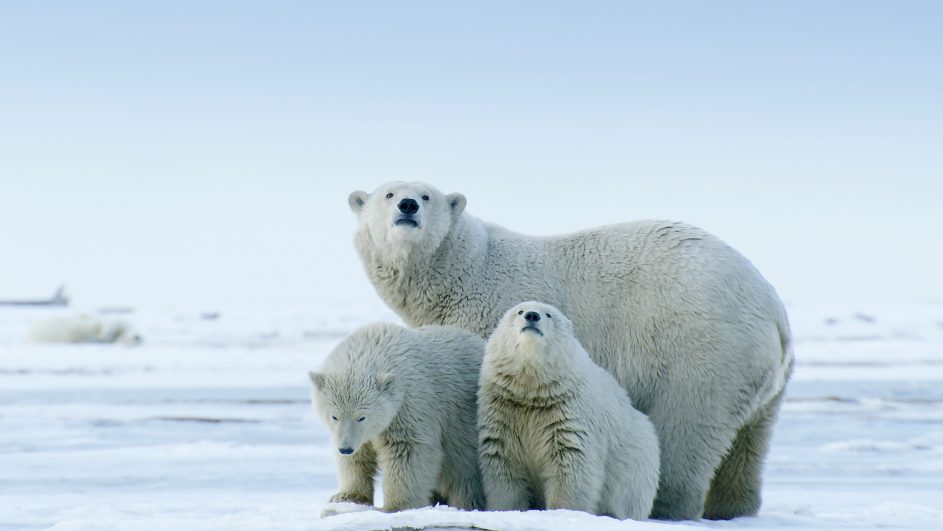Nature
America’s Arctic – A Refuge Imperiled
Synopsis
The coastal plain on the northern coast of Alaska is a unique place. For millennia it has been the summer home for huge herds of caribou and countless migratory birds. The area supports a greater variety of plant and animal life than any other protected area in the Arctic Circle. This is the Arctic National Wildlife Refuge.
This film shows the splendor, enormous scope and indescribable beauty of this untouched land far to the north of Alaska, one of the last havens for caribou herds and polar bears. Shot over a period of four years, this film offers a unique insight in the lives of the most charismatic arctic animals. Outstanding aerial photography captures the scope and epic dimensions of the annual caribou migration, revealing the many dangers the herds encounter on the way. Awe-inspiring footage shows how wolves and grizzlies strategically stalk and attack the herds.
The Arctic coastal plain stretches southward from the coast to the foothills of the Brooks Range. This area of rolling hills, small lakes, and north-flowing, braided rivers is dominated by tundra vegetation consisting of low shrubs, sedges, and mosses. Caribou travel to the coastal plain during June and July to give birth and raise their young. Migratory birds and insects flourish here during the brief Arctic summer. Tens of thousands of snow geese stop here during September to feed before migrating south, and muskoxen live here year-round. Along the northern coast of the refuge, the barrier islands, coastal lagoons, salt marshes, and river deltas of the Arctic coastal tundra provide habitat for migratory waterbirds including sea ducks, geese, swans, and shorebirds.
But this unique paradise hides another natural treasure. Almost 8 million barrels of oil are believed to be extractable from this part of the Arctic, most of it within an area designated as “1002”. The refuge is now under threat from the Trump Administration’s policy which systematically dismantles environmental protection in favor of the oil extraction industry. For the last 40 years, ever since the Refuge received its protected status, Republicans have tried to open the area to oil exploration. They all failed – until last year a drilling provision was slipped into a tax bill creating the legal basis for the exploitation and – consequently – destruction of this unique ecosystem.
At the moment of the making of the film, the then-current US administration was working hard to clear the remaining regulatory and legal hurdles to sell off two of the leases expecting 2,2 billion Dollars in return. But the losses would be immense: “This is one of the last truly wild landscapes”, says filmmaker Florian Schulz, “It’s like looking back in time when mastodons roamed the land.”
A Terra Mater Factual Studios production in co-production with Campion Advocacy Fund and Doclights/NDR Naturfilm in association with Florian Schulz Productions






